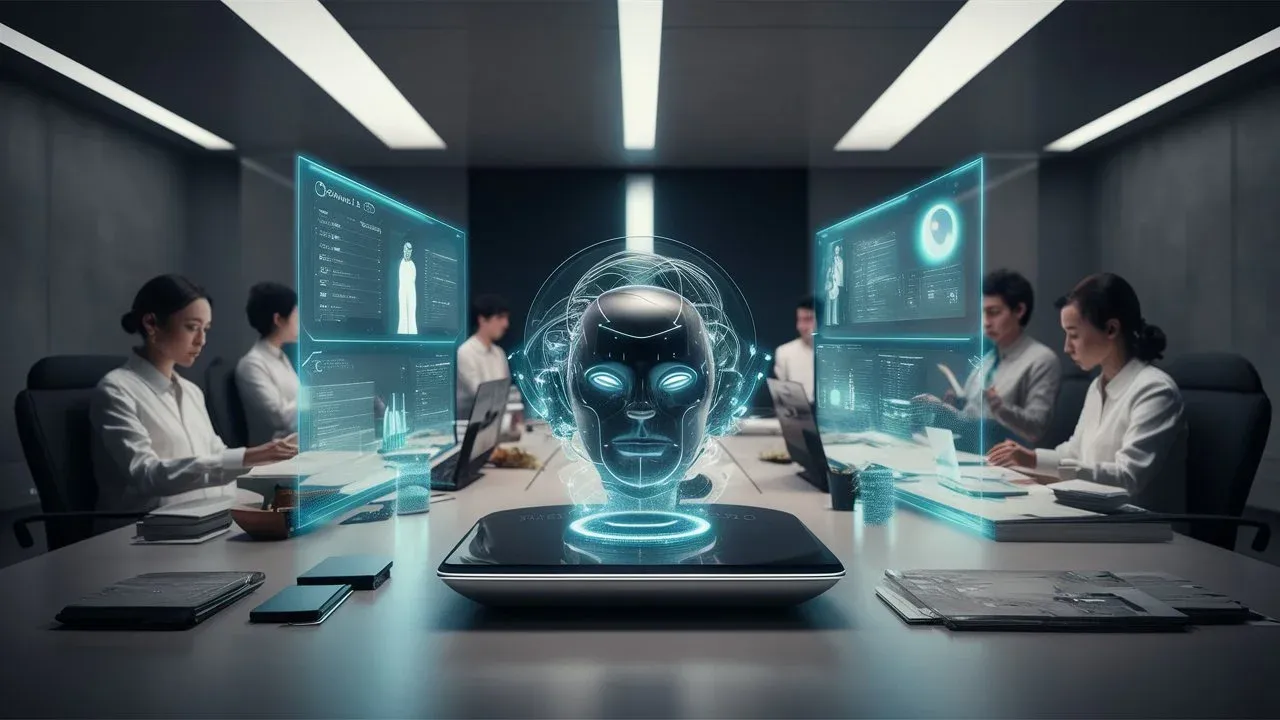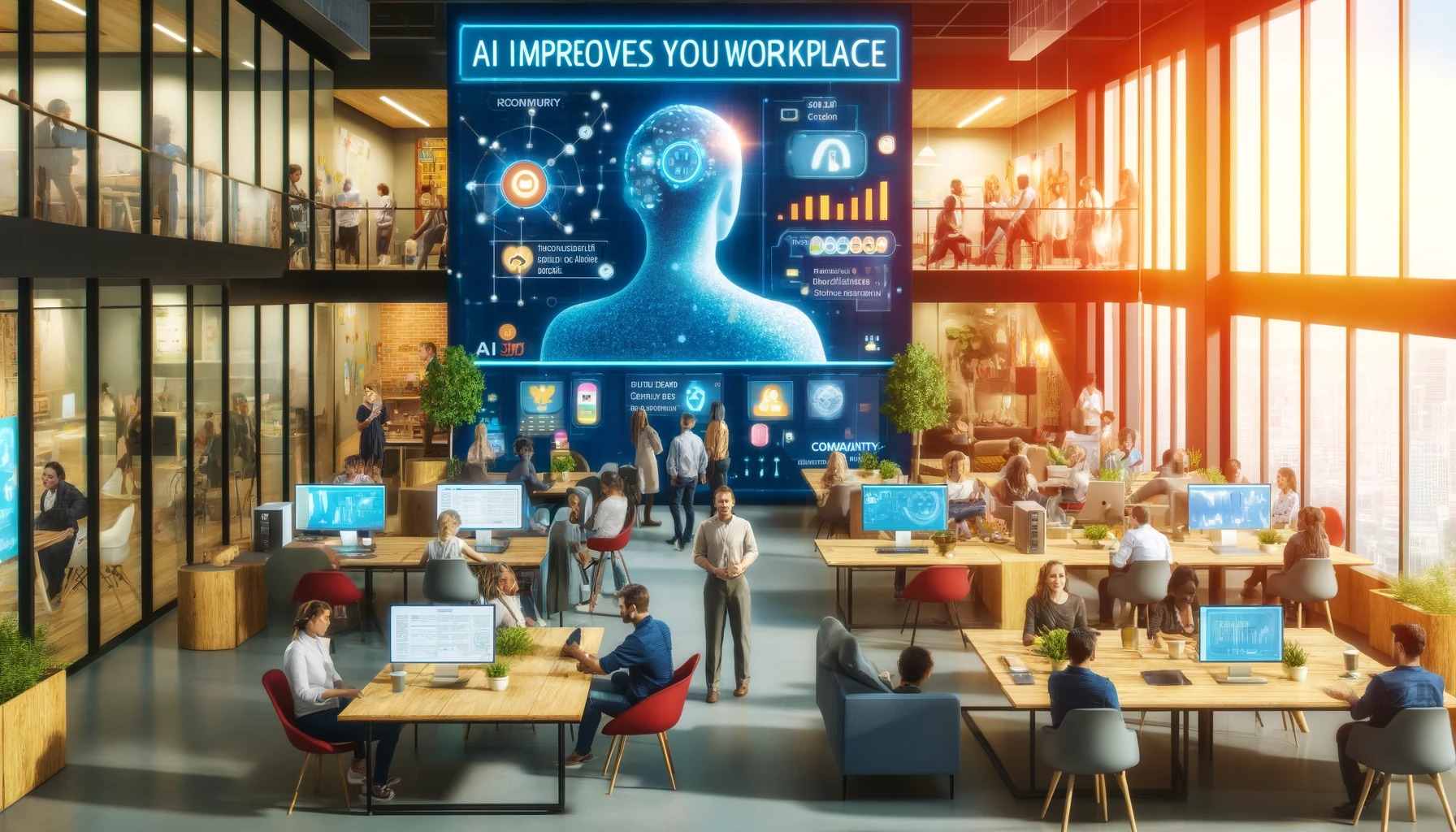Artificial intelligence is now taking on a larger role in office routines across different industries. From daily tasks to strategic planning, machines are becoming active participants in workplace processes. Employees and employers alike are beginning to see that automation and data-driven tools are affecting how things are done.
Traditional approaches are being adjusted to suit these modern systems, and as such, office workers are learning to depend on AI tools for faster results and better accuracy.

Smart systems take on the busywork so workers can think bigger (Photo: Twitter)
With many organisations seeking ways to increase productivity, artificial intelligence is being introduced to offer timely support in many office functions. Whether it is for managing schedules or analysing trends, the presence of AI is becoming more common.
Rather than replacing workers completely, AI is being used to support them and help with heavy workloads. While some people worry about job losses, others believe the technology opens the door to more advanced positions that require a human touch.
Businesses now invest in systems that use AI to save time, reduce errors and process vast amounts of data quickly. These changes are creating new expectations for office workers, especially in areas like communication, data handling and project management.
Automation of Routine Office Work
One of the main ways artificial intelligence is affecting office life is by taking over repetitive duties. Tasks such as sorting emails, organising meetings and preparing standard reports are now handled by systems that follow preset instructions.
These duties used to take a lot of time, but software powered by AI can now complete them within seconds. Personal assistants like scheduling tools and email management platforms are reducing the pressure on office staff, making it easier for them to focus on work that requires thinking and decision-making.
In customer service departments, AI-driven chatbots can now respond to queries in real-time, providing users with answers based on stored information.
These tools reduce the need for long queues and lessen the burden on staff members who would otherwise respond to these inquiries manually. When employees no longer have to focus on repetitive actions, they can redirect their energy to areas that benefit more from personal input.
Enhancing Office Communication
AI is now contributing to how people talk and share ideas at work. Advanced software programs are helping staff write emails, review documents and correct grammatical mistakes without needing outside help.
These tools learn from the user’s writing patterns and offer suggestions to improve their messages. With features like auto-correction and phrase recommendation, office workers are better equipped to maintain clear and effective communication with clients and colleagues.
Virtual meeting tools also now use AI to produce summaries, highlight action points and offer translations during conversations with international teams.
This development allows workers in different time zones to remain informed and participate more easily. As a result, global communication inside companies is getting smoother, and fewer details are being missed in conversations.
Data Analysis and Forecasting
Another area where artificial intelligence is being adopted is data interpretation. Machines can now study trends and provide outcomes based on collected figures.
In the past, employees would spend several days sorting data and attempting to find patterns. With AI, this process is faster, and the results are usually more accurate. Marketing departments, for instance, now use predictive tools to estimate customer behaviour or plan for future campaigns.
Finance teams also depend on automated software to detect fraud, balance accounts or track spending habits. By reducing the need for manual entry, companies can trust that their reports are more reliable.
With these tools in place, decisions can be made quicker, and responses to financial matters are more timely. AI is supporting decision-makers by presenting well-organised facts and figures that can be used during meetings or planning sessions.
Recruitment and Human Resources
Hiring practices have been influenced by artificial intelligence as well. Human resources teams now use tools that help sort through resumes and identify the most qualified applicants based on keywords and experience.
Rather than reading thousands of documents one by one, these systems help narrow down the options within minutes. This has helped organisations move faster with their hiring process and find candidates that match specific roles more closely.
In performance evaluations, AI software can track an employee’s progress and identify areas that need improvement. It can measure output, attendance and even the tone of communication between staff members.
With this kind of monitoring, managers can offer better feedback and support personal development. Though it raises questions about privacy, many businesses use these tools to improve efficiency and provide fair reviews.
Office Security and Privacy
As AI systems grow more popular, so does the concern for data protection and privacy. Offices now depend on digital platforms to store important records, and AI helps detect unusual activities that could suggest a cyberattack.
From recognising suspicious login attempts to blocking harmful links, AI programs are supporting company efforts to protect sensitive information. Security measures now include identity recognition, device tracking and automated alerts that keep the IT department informed.
However, some employees are worried that these tools might also be used to monitor their actions without consent. Questions about data use, consent and transparency continue to surface.
Companies are expected to put proper rules in place that protect both the business and its workers. When handled properly, AI can help offices maintain strong digital safety without putting personal details at risk.
Creating a More Flexible Work Environment
Artificial intelligence has also made it easier for workers to operate from different locations. Remote work setups, made popular in recent years, have benefited from tools that allow teams to remain productive while apart.
With AI-based apps that track time, manage projects and suggest workflow improvements, office routines can now run smoothly without everyone being in the same place.
These tools also adjust to the habits of each worker and give tailored reminders or updates. Employees receive daily briefings, meeting notes and calendar updates without needing to rely on another person.
This self-directed model gives staff members more control over their time and helps them manage responsibilities based on personal schedules. As more companies adopt flexible arrangements, AI tools continue to support this change.
Changing Skills and Workplace Roles
The growing presence of AI in offices means workers must now learn new abilities. Roles that were previously manual are now requiring digital skills and knowledge of AI-based platforms.
Training programs have become common in many workplaces, aimed at helping staff adjust to the changes. Workers who know how to use AI tools are being seen as more prepared for the future.
Team leaders also now consider technological awareness when promoting employees or assigning projects. Basic knowledge of AI systems is fast becoming part of job descriptions, especially for positions in operations, management or analysis.
While some tasks are being automated, others are being created around the need to manage or support these systems. This new demand is shaping the way employees think about their career growth and development.
Cultural Changes Within Offices
Beyond processes and output, AI is also affecting workplace culture. Staff are learning to work alongside machines, and this is changing the expectations people have of each other.

Office life gets a tech upgrade with automated scheduling and reporting (Photo: Shutterstock)
Teams are becoming more dependent on systems that manage updates, offer advice, or flag delays. The presence of AI is shaping daily interactions, pushing colleagues to become more digitally minded in how they collaborate.
There is also the question of how human judgment compares to AI-generated recommendations. Some workers may feel that they are being replaced or that their opinions are being dismissed in favour of data.
To avoid these tensions, office leaders are expected to encourage conversations that focus on teamwork between humans and machines. Respect for both human creativity and technological efficiency is becoming a guiding principle in many workspaces.
As artificial intelligence continues to affect various levels of office operations, people are adjusting their methods to stay productive and competitive. The change is neither instant nor uniform across all sectors, but the changes are steady.
From communication to decision-making, from routine tasks to strategic planning, AI is now involved in several aspects of work life. While the technology brings comfort and convenience, it also requires responsibility, care, and training.
Businesses that make room for learning and growth will benefit most from these tools, as their teams learn how to mix human ability with machine power.
As office routines progress, it is clear that artificial intelligence is no longer something to expect in the future. It is already part of how work is being done today, and those who adjust to it early are better positioned for long-term success.
























